How to Count Calories Correctly

Counting calories can help you not have to use strict diets that could harm your health. It also teaches you to eat correctly: people start eating enough proteins, fats, and carbohydrates, which has a positive influence on the entire body. And it doesn’t mean you have to exclude the foods you love so much. It’s enough to just cut down on them and balance your diet with other foods or add another workout to your schedule.
We at 5-Minute Crafts want to explain what you need to know about counting the calories of different foods correctly.
The algorithm of counting the individual calorie
1. Count your basal metabolic rate. This is the rate of energy expenditure per unit of time. You can calculate BMR using an online calculator or by yourself. For men and women, the formulas for the BMR calculation are different:
- For women, it’s calculated this way: (10 x weight in kg) + (6.25 x height in cm) — (5 x age) — 161.
- For men: (10 x weight in kg) + (6.25 x height in cm) — (5 x age) + 5.
2. Calculate the needed caloric intake. To do this, take the BMR number and multiply it by the physical activity level:
- 1.3 — a sedentary lifestyle, no physical activity or 1-2 light workouts a week, short everyday walks.

-
1.5 — moderate activity during the day, usually work-related, and up to 4-5 workouts a week.
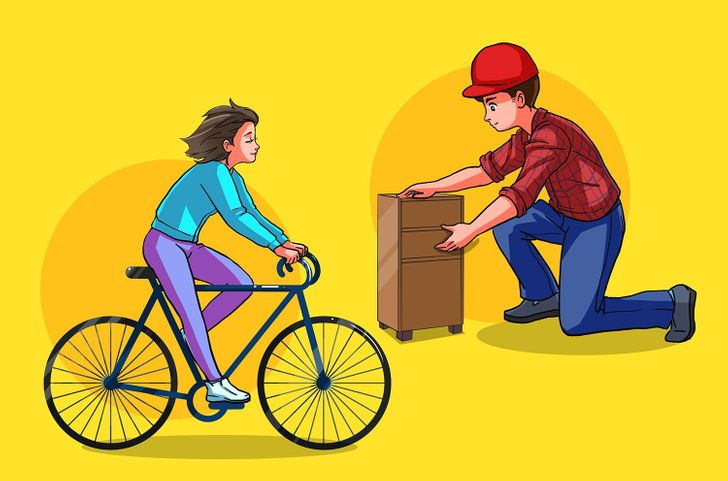
-
from 1.8 — high physical activity during the day and everyday workouts. This activity is normal for professional athletes and people whose jobs involve a lot of physical labor.

As a result, you will get the number of calories your body needs to support vital functions every day. To lose the extra weight, you need to decrease the number of calories you eat every day or increase physical activity. And vice versa: if you eat 100 calories more than you need every day, then without additional physical activity, you will gain 4.5 kg in about a year.
Example: A woman is 31 years old, her height is 168 cm, and her weight is 48 kg. She has to sit at work, she walks 3 km every day, she walks her dog and she plays sports from time to time. Her BMR is 1,214 cal. If we multiply her number by her physical activity level (1.5), we get 1,824 — the exact number of calories she needs to have every day to keep her weight unchanged.
Why you need to know about proteins, fats, and carbs
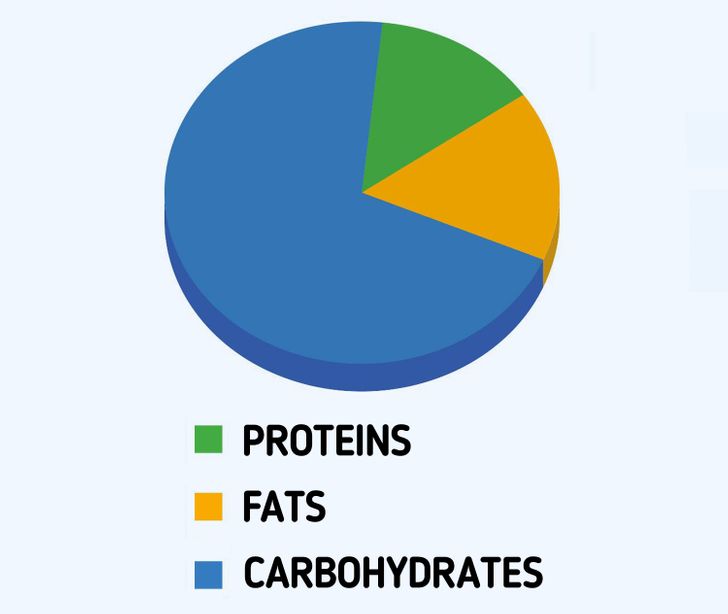
In your diet, it’s not just the number of calories that matters, but also the balance of proteins, fats, and carbohydrates. There’s a certain reference daily intake number that is calculated based on the age, sex, and physical activity of a person.
The percentage of these elements should go like this — 45-65% carbs, 20-35% fats, and 10-35% proteins plus different microelements, vitamins, and amino acids.
How to count your individual need for proteins, fats, and carbs
- Count your daily caloric intake based on your basal metabolic rate.
- Decide on your goal: you want to keep your weight the same, gain weight, or lose weight.
- Depending on the goal, calculate the daily caloric intake and watch the balance of proteins, fats, and carbohydrates. Usually, it’s counted for 100 grams of a product. The information about vegetables, fruits, meat, and other foods that are often sold without packages can be found on special websites and mobile applications.
How to count the proteins, fats, and carbs of foods of different weights and of complex meals.
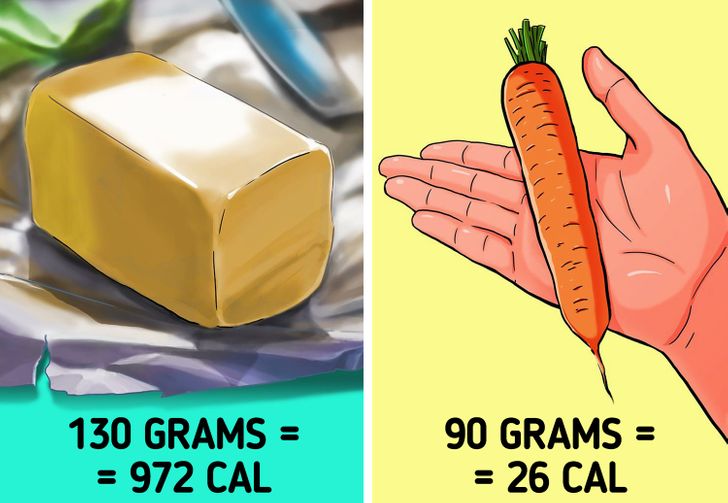
How to determine the balance of proteins, fats, and carbohydrates?
Example № 1: You want to count the balance for 130 grams of butter. The pack says that 100 grams of butter contains 748 cal, 0.6 grams of protein, 82.5 grams of fat, and 0.9 grams of carbs. To calculate the balance of the elements for 130 grams, you need to multiply all these numbers by 1.3 and you get 972 cal, 0.78 grams of proteins, 107.25 grams of fats, and 1.17 grams of carbs.
Example № 2: You want to eat 80 grams of fresh carrots. You know that 100 grams of carrots contain 33 cal, 1.3 grams of proteins, 0.1 grams of fats, and 7 grams of carbs. To count the balance for 80 grams, you need to multiply all the numbers by 0.8 and you get 26.4 cal, 1.04 grams of proteins, 0.08 grams of fats, and 5.6 grams of carbs.
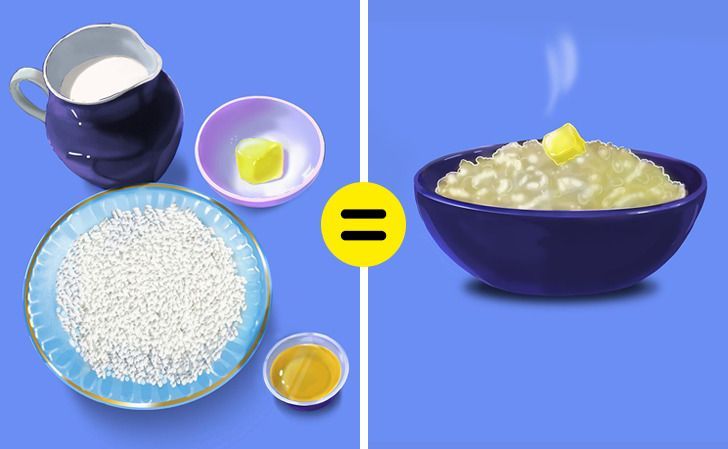
If you are making a meal using different ingredients, you need to calculate the calories yourself: before cooking (but after peeling) take every ingredient and calculate the energy value and then add the numbers together.
How to calculate the balance of proteins, fats, and carbohydrates of a complex meal?
Example: You are cooking rice with milk, honey, and butter. Weigh every ingredient (rice, milk, butter, and honey) and count the element balance of each of them and then add the numbers. It’s important to use the weight of the dry rice before you boil it.
If you use oil when cooking something, don’t forget to take that into account.
7 useful tips for people that count calories

-
It’s better not to eat sugar. For example, you can replace regular milk with soy milk that contains less sugar, or even almond milk that contains none. By the way, this milk contains vitamins and microelements which make it even better for your health.
-
You can add special spices that make the taste better without salt or sugar.
-
Plan what you eat 1-3 days ahead and leave room for an unplanned snack of 150-200 cal. You can eat 1-2 bananas, a big portion of lettuce, or a handful of nuts.
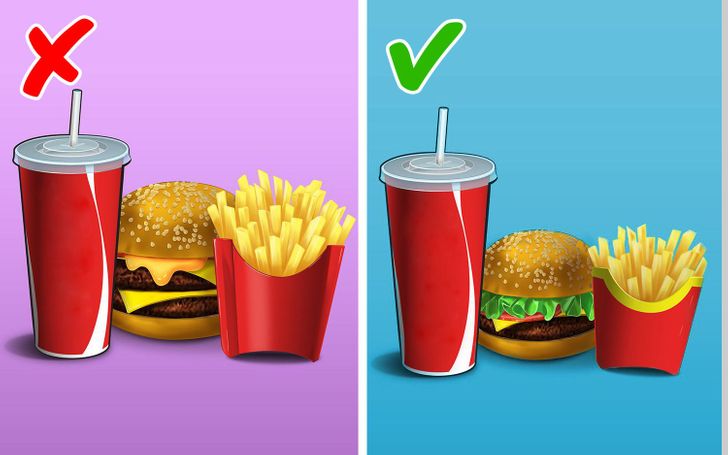
-
Fast food can’t be good for you, but you can reduce the caloric intake. You can order sugar-free soda, order a smaller container of French fries, and get a burger without sauce.
-
It’s really hard to count calories when you eat out. There are 2 ways to do this: either eat foods that are definitely no more than 200 cal or something that you often cook at home and you know its energy value.
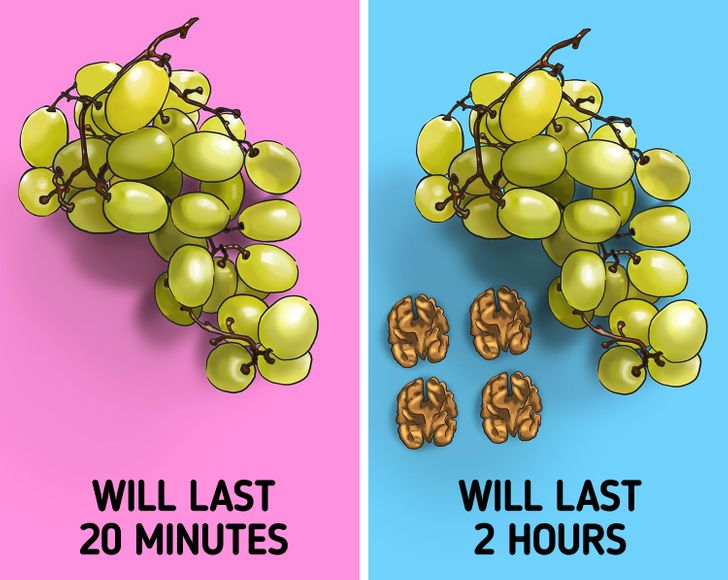
- By combining different products, you can not only improve the taste but also create very good snacks. For example, grapes contain fiber and carbs, and they are a decent snack. But if you add walnuts that contain fats and proteins, it will be very good for you, and you won’t be hungry for a couple of hours.
- If you’ve eaten too much on a certain day, don’t starve yourself the next day or you will mess up your metabolism. Keep eating as usual, but spend a few more hours during the week on additional training or other physical activity.